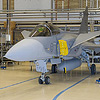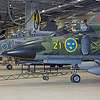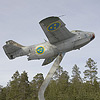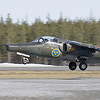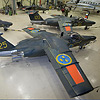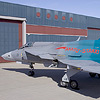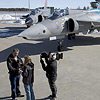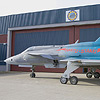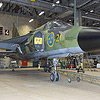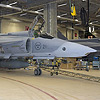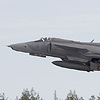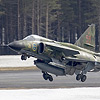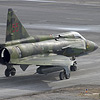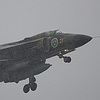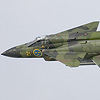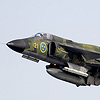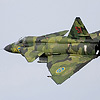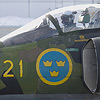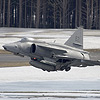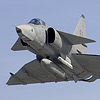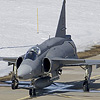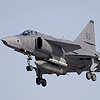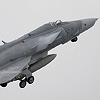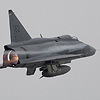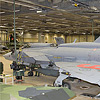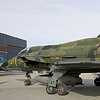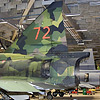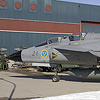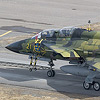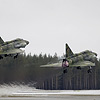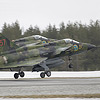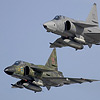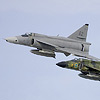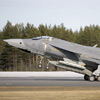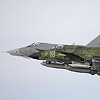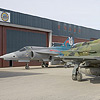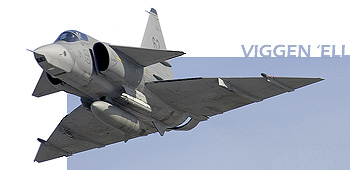
Lulea Photo Tour 2005 Feature Report
Saturday 6th April - Sunday 7th April
2005 will no doubt go down as a benchmark year for unit and aircraft retirements. It's a case of "get them while you can", as with the more complex aircraft, when they've gone, they've gone; it's unlikely many retiring fast jets will end up in private hands. Therefore, an ear to the ground and an eye on the web and magazines is required to avoid any missed photographic opportunities. On this occasion a place on the Aircraft Illustrated Photographer Tour, which was limited to 40 lucky enthusiasts, made the following report possible.
When learnt that a photo-farewell was being planned for Sweden's few remaining Viggens, he readily applied for a place on the trip. All photos by the author.
Lulea, the home of the last active Viggen unit in the Flygvapnet, is situated in Norrbotten, about 150 kilometres south of the Arctic Circle. On arrival at the gate at we were welcomed by recent retiree Stefan Helsing, with whom the arrangements for the visit to F21 Wing had been made. He introduced us to our hosts for the visit, who then briefed us on the two day schedule. The swift decline in the number of active Viggens was brought home by the noisy departure of two aircraft. One was destined for dismantling at Halmstad, the other bound for the museum at Angelholm.
A well planned schedule was arranged around the flying activity, making sure we were in good locations for photography throughout both days. The weather on day one was superb for photography, if a little chilly. A surprise was promised for later, which turned out to be a specially marked aircraft with the script "AKKTU STAKKI" which we were informed translates to "Lone Wolf" which is also the squadron emblem applied to the tail. A visit to the base by so many "plane crazy" foreigners attracted the attentions of the local media, with a spot on the local TV evening news and photos splashed across the next morning newspapers. A visit to the new control tower was the first stop for our group, enabling a good view, 30 metres up, of the layout of the airfield with its 3,350m/11,000ft long runway, the longest in Sweden. The airfield has a military side and a civil side. Unfortunately the old control tower was being dismantled right in front of us, which was a bit of an obstruction.
During the day, there were several sorties, which were usually in pairs. AJSH37 (surveillance) and AJSF37 (photo-reconnaissance) operated together in a maritime reconnaissance role, the radar of the former being used to locate the target for the latter to photograph. Runway 32 was used throughout the day with the various aprons being used by the photographers. The schedule of flights throughout the visit was kept to, as were our positioning at the required locations. The evening was spent in the town of Lulea, which was very quiet on Wednesdays! A vivid reminder of our location was a brief display of the northern lights, which we were informed, was unusual for April.
The second day of the visit was spent mostly shivering in poor weather. Luckily there was also plenty to see and photograph, with coffee provided at the aprons to keep us thawed out. The change in wind direction meant that Runway 14 was being used. Accompanying us during the visit were pilots and ground staff, who were on hand to answer any questions and ensure our safety. We were given access to the flight line and hangars, where the approximately fourteen Viggens still in service are kept. The Gripen, which is superseding the Viggen, was not very active during our visit, as most of the staff operating it were away on a survival course. We were shown around the hangar were they are kept, in almost laboratory-like cleanliness and lack of clutter. Another hangar, due to house more Gripens, is to be updated in due course.
There are a few SK60 aircraft based at Lulea, used mainly for communications. Also seen during the visit were two Saab 340 transports. Falling snow during the afternoon made photography difficult, but it didn't prevent one last Viggen flyby with full afterburner and wing waggle.
Before leaving for the airport on the Friday, we were met again by Stefan Helsing, this time giving up his spare time to proudly show us around the F21 museum. Because Lulea has always had a Photo-Reconnaissance unit based there, the photographic exhibits are superb and a unique record of the Flygvapnet at Lulea since the 1940's.
The snow got heavier during the morning, closing the main runway and making the return flight to Stockholm a concern. We needn't have worried, as a line of eight snow clearers in an echelon reminiscent of combine harvesters on the Canadian Prairie made light of the 3" of snow that had settled. The SAS MD80 was thoroughly de-iced with copious amounts of orange and yellow liquid, before departing from the same runway we'd been standing by for the previous two days.
Our hosts, ably led by Stefan von Below and Louise Levin could not have gone to any greater lengths to make us more welcome and the visit more memorable. Thanks are also due to Richard Cooper of Aircraft Illustrated & Combat Aircraft, for organising access to the various facilities of Lulea / Kallax.

